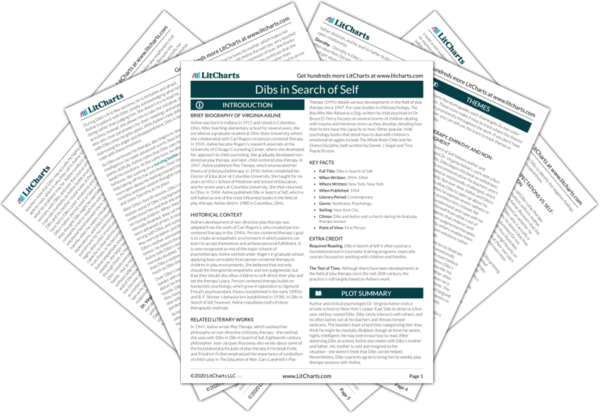Axline continues to act without judgment. Even though Dibs’s song may have been disturbing, only by expressing those feelings is Dibs then able to move past them. And again, Dibs demonstrates how his emotional insecurity impedes his intellectual capabilities. When he is distressed about leaving with his sister for the doctor, he becomes unable to dress himself. It’s not that he can’t do it—it’s perhaps that the idea of being back with his family makes him feel powerless, or possibly that he wants to ensure that he still has Axline’s empathy and support.
